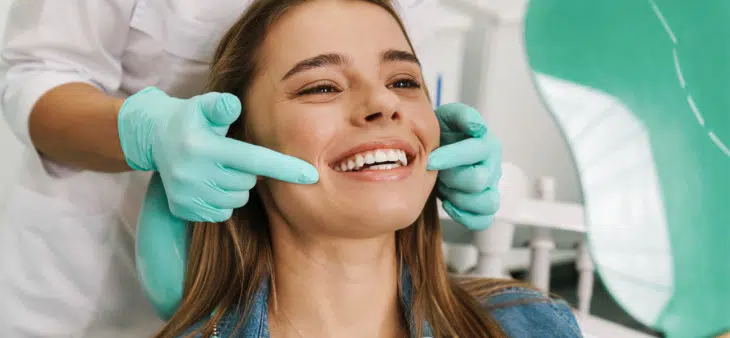
Dental cleanings are the most common procedure in a dental office. During a dental cleaning, your dental hygienist carefully examines each tooth using specialized tools to look for symptoms of tooth decay, gum disease, injured teeth, infection, and abscesses.
A Dental Place recommends you receive professional teeth cleaning every six months so your hygienist can identify potentially troublesome oral issues before they become more invasive. Learn more about what your dental hygienist looks for during cleaning and why these appointments are vital to your oral health.
Tooth Decay
Your hygienist takes dental X-rays to identify any potential problem areas before the cleaning begins. Tooth decay looks like little black spots or holes in your tooth enamel. The hygienist examines these problem areas in greater detail during your cleaning.
Untreated tooth decay leads to discolored, broken teeth, gum disease, and tooth extraction. Your hygienist must use tools like a dental probe to examine each surface for decay during your cleaning, including under the gum line. If they find decay, they will recommend the appropriate treatment before further damage occurs.
Gum Disease
Periodontal disease, or gum disease, is a serious oral health issue. Your hygienist looks for symptoms of gum disease during your dental exam, including redness, swelling, tenderness, bleeding, and receding gums. Areas of bone loss that show up on your dental X-rays also indicate periodontal disease.
Untreated, periodontal disease leads to tooth decay, tooth loss, and bone loss. Researchers have also discovered a link between gum disease and dementia. Your hygienist can help you prevent these more serious issues by checking for gum disease.
Cracked or Broken Teeth
Your hygienist will carefully check each tooth for cracks, chips, and broken pieces. Without noticing, you can easily chip or crack a tooth on hard foods, such as ice, nuts, or candy. Your hygienist can see more of your teeth than you can, so they can catch small cracks that may cause more significant problems in the future.
Broken or cracked teeth can lead to infections and tooth loss if they aren’t caught and restored. By checking for cracks, chips, or breaks, your hygienist helps you prevent the need for further dental treatments like root canals or restorations.
Infection
Oral infections cause problems not just with your teeth but also with your overall health. Common infections include canker sores, thrush, gingivitis, periodontal disease, herpangina, and hand-foot-and-mouth disease. Rarely, some untreated oral infections can cause endocarditis or a heart infection.
Your hygienist examines your entire mouth for signs of oral diseases, including redness, swelling, pus, or bleeding, to ensure you receive swift treatment.
Abscesses
An abscess is an infected area surrounded by tissue. Abscesses look like a small mass, often red, hot, and swollen. They cause a lot of pain before treatment or rupture on their own. Untreated abscesses carry the same risks as untreated infections.
Your hygienist will look for signs of abscess formation even if you can’t feel one, like irritated-looking tissue. If they see abscessed tissue, they can alert the dentist so you can get treatment as soon as possible.
Schedule Your Cleaning Today!
An excellent oral hygiene routine can prevent some problems, but not all. Getting your teeth cleaned every six months allows your hygienist to spot minor issues before they become severe, avoiding problems like systemic infection or tooth loss. Routine dental care also keeps your smile bright and protects your oral health.
Contact our helpful staff at A Dental Place to schedule your cleaning today. Our friendly dental hygienists can perform a thorough cleaning to ensure you stay in good oral health.
